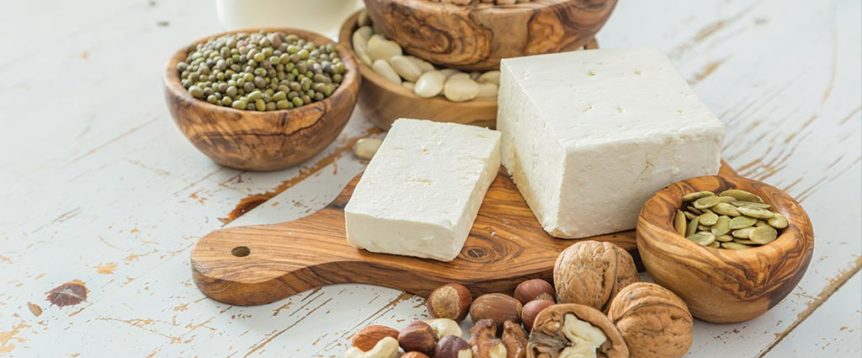Protein. It’s an important nutrient and building block of bones, muscles, cartilage, skin and blood. It’s available from animal sources, including milk, meat, fish and eggs, but it’s also plentiful in plant sources such as soy, beans, nuts and peas.
If you’re striving to follow a more plant-based diet, look for meat-substitute options made from soy, wheat gluten or vegetables (or a combination), which continue to pop up in the refrigerated and frozen sections of grocery stores. We asked cookbook author and award-winning vegan chef Mark Reinfeld (veganfusion.com) for his personal favorites and how best to prepare them.
Seitan
Higher in protein than tofu or tempeh, with a very meat-like texture, seitan is made from processed wheat gluten. If you’re celiac or gluten-free, it’s best to avoid. The name comes from the Japanese words “sei” meaning “to be, become, made of” and “tan,” as in tanpaku, which means “proteins.” It’s a primary ingredient in many mock meats, such as Field Roast and Gimme Lean.
“Depending on how you flavor it, seitan can emulate chicken, beef or pork,” says Reinfeld. It has a dense, chewy texture that holds up to grilling, baking, frying, simmering or steaming. Much like tofu, seitan has little flavor and acts like a sponge to absorb flavors from sauces and marinades. “I love using it in stir-fries,” Reinfeld adds.
Nutrition: A good source of calcium and iron. 72 grams of protein per cup.
Tempeh
Tempeh is a soy-based meat alternative that’s firmer than tofu with a grainier texture and a savory, nutty flavor. It’s made from cooked, slightly fermented soybeans formed into a firm patty or block.
Tempeh is very versatile. Slice or cube it, and use just like meat in soups, stews and stir-fries. “I like crumbling or grinding it up in a food processor and using it like ground meat in a Bolognese sauce or chili,” Reinfeld says.
Nutrition: manganese, phosphorus, magnesium, riboflavin, fiber and calcium; 31 grams of protein per cup.
Try a recipe: Tempeh Taco Bowl
Tofu
Tofu or bean curd is a great substitute for meats—including pork, chicken, beef and seafood—in recipes. It’s made by curdling fresh soy milk, pressing it into a solid block and then cooling it.
Tofu gets a bad rap for being bland and spongy. “But it has an amazing ability to absorb flavors through spices and marinades,” says Reinfeld. Extra-firm tofu is best for baking, grilling and stir-fries. Use soft or silken tofu in sauces, desserts, smoothies and salad dressings.
Nutrition: calcium, iron, manganese, selenium and phosphorus; 20 grams of protein per cup.
Try a recipe: Veggie Pho
Pea Protein
“I think this is going to be a big protein,” says Reinfeld of this plant-based product making its way onto shelves in powder form and into alternative meat options like Beyond Meat. Ben & Jerry’s uses it in several nondairy flavors. It comes from yellow peas and is gluten- and dairy-free.
Nutrition: Just less than 1 ounce (23 grams) has 17–24 grams of protein, 6 grams of fiber and 100 percent DV of vitamin D.

